 Facebook
Facebook
 X
X
 Instagram
Instagram
 TikTok
TikTok
 Youtube
Youtube
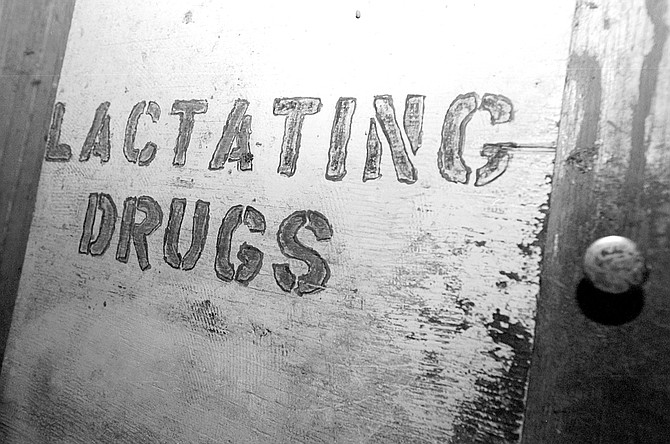
Sonny Cauzza's straw cowboy hat sits high on his head, shading his suntanned face. His copper-gray mustache matches the hair on his temples. Tall, powerfully built, and decked in tan cowboy boots, jeans, and a western-style shirt, the 64-year-old looks every bit the cattle rancher.
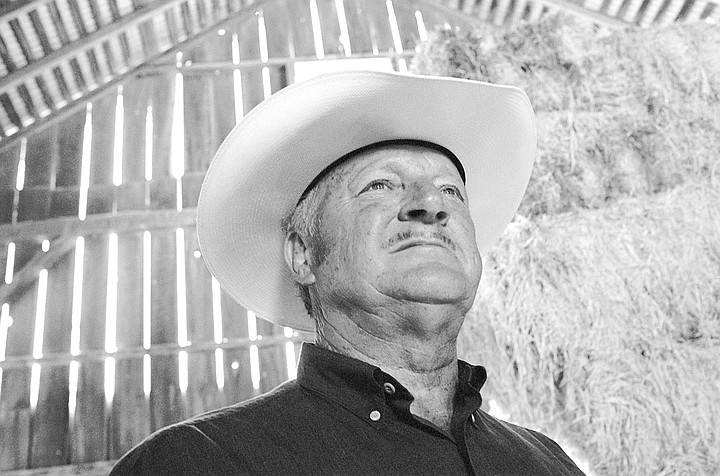
Cauzza's father came from Switzerland in the 1930s to work on the dairy and cattle ranch his uncles had built, first on a site southwest of Ramona, where San Diego Country Estates now lies, later in Santa Ysabel. Cauzza grew up on the Santa Ysabel cattle ranch he owns now. Two of his three sons and their children live and work on the ranch. For Cauzza, no distinctions exist among life, family, and ranching.
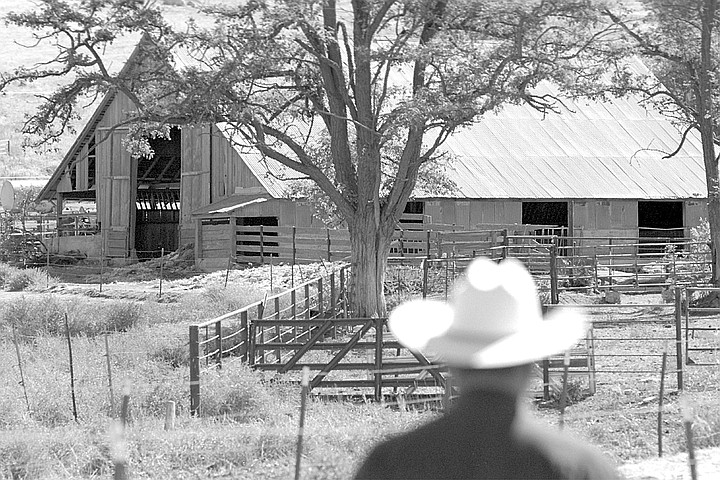
"This is my brother's piece," Cauzza points to the west as he steers his truck north on Highway 79, a mile north of Santa Ysabel. "He's got about 950 acres. My piece is over on the other side of the road. I've got about 850 acres. We're kind of dividing up the place right now. My folks passed away ten years ago. We're just finished paying the estate tax now."
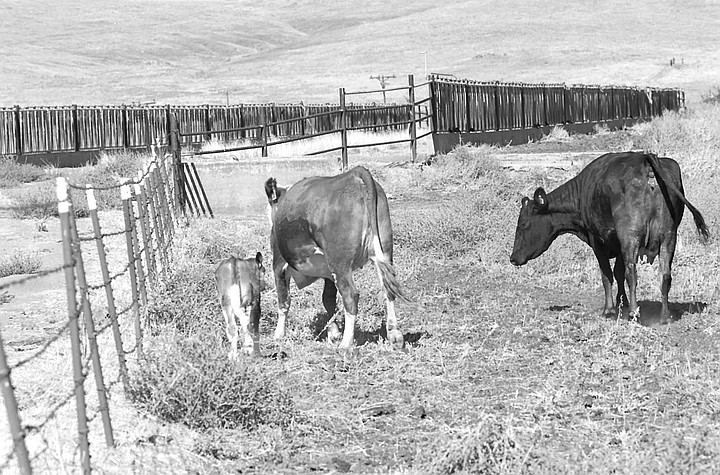
To pay the estate taxes, Cauzza sold 100 acres of the easternmost part of his ranch, on the slopes of Volcan Mountain. "Whenever somebody dies," he says, "you have to sell a little bit to pay those estate taxes. You can't afford to keep it all."
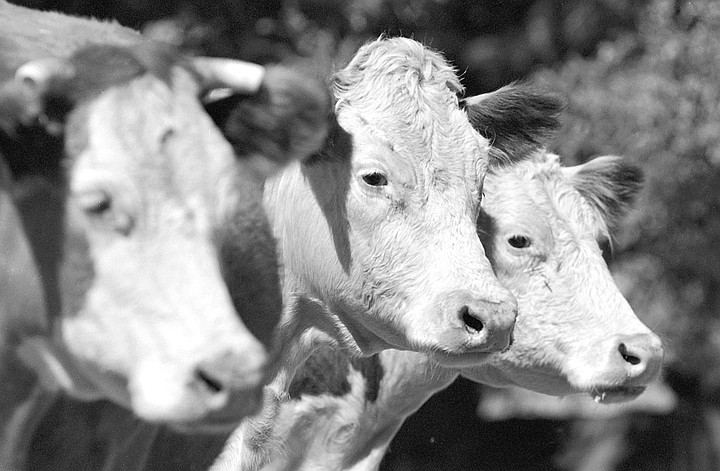
Engelmann, black, and live oaks dot Cauzza's property, which occupies the part of the valley where the grassy floor curves upward and becomes the foothills that reach up toward Volcan Mountain. He runs 200 cow-and-calf pairs of mixed-breed beef cattle -- "hereford, angus, limousin" -- on these 850 acres and another 1600 acres he owns in Mesa Chiquita, which crowns the hills forming Santa Ysabel Valley's western border. "We also had dairies for years," Cauzza explains. "We had three dairies in the family. Two down here, and one up on Mesa Chiquita. That was the last one operating. It closed down almost two years ago."
Cauzza turns the old Ford off 79 and onto a road that winds up the hill to Mesa Chiquita, where two post-and-beam barns, built in the 1930s, stand surrounded by a cluster of corrals. "This is the dairy," Cauzza says. "We closed it down in January 2000, but I still have all the milking equipment. I haven't sold it yet, in case someone might want to lease it. We've still got the permit. We've got the holding ponds full of water, which you have to have to keep your permit up — so you don't contaminate the streams."
The dairy's modest size and remote location are what led to its closure. "The problem was," Cauzza explains, "we weren't quite big enough. We only milked 200 cows. Most places milk 1000. The milk trucks don't want to drive all the way out here to pick you up if you're small. You've got to have 700 gallons, or they charge you double on their freight."
He walks through a room of the barn holding the stainless-steel refrigerated milk tank and into the main milking barn, where some old hay still lies in the feeding troughs of the milking racks. "Originally," he continues, "there were three dairies in the area, so there was enough milk to warrant the truck. But then the other two sold out. For a long time, the milk truck didn't charge us more. But then fuel went up and everything went up, so we shut down the operation."
With the dairy shut down, the sole cash generator on Cauzza's ranch is the sale of beef cattle. "Most of what we sell," he explains, "are 'weaner' calves, which means they're right off the cow — seven, eight months old."
At that age, the calves are 400 to 500 pounds. Cauzza loads them, 30 at a time, and trucks them "102 miles" to the nearest cattle auction, which is in Chino. "We used to go to Hemet," Cauzza said, "but there's no more sale there."
At the Chino auction, which takes place every Wednesday, Cauzza's calves 'bring about $400 each. That's been the average for the last couple of years." He says that's a good price. If he sells 150 calves in a year — "that's what we try to average" — at $400 a head, he makes $60,000.
In addition to the weaner calves, cows that aren't pregnant by autumn go to auction, "because they don't pay," Cauzza says. "In late summer or fall, you preg-check them instead of waiting until spring to see if she's going to have a calf. Because if she doesn't, you've lost all that feed. If she's not with calf, she goes to slaughter, and [in spring] you keep a heifer calf to replace her."
By keeping a few heifer calves every year and selling the rest, Cauzza maintains his herd count without having to buy any cows. "Occasionally, we'll buy a bull or exchange bulls with a neighbor," he says.
Other than the odd bull purchase, Cauzza lists feed, taxes, electricity, and gas as the ranch's expenses. Feed he buys directly from farmers in the Imperial Valley. Because he trucks it himself, it costs around $80 per ton for sudan grass, $100 for alfalfa. But with a herd of 200 cow-calf pairs and a 2450-acre ranch, which Cauzza estimates can feed one cow for every 10 to 15 acres, he doesn't need to buy much feed for his cows. "When the snow's heavy," he says, "you might feed her a little hay. Otherwise, she pretty much feeds herself on the land."
Property taxes are kept reasonable because Cauzza's ranch is in the federal agricultural preserve program. "If it wasn't," the rancher says, "I wouldn't be able to survive. See, we had a piece up in Julian — it was 130 acres — that wasn't in the preserve. The folks kept it out, knowing that when it was time to pay estate taxes, something was going to have to be sold. Well, that piece up there cost $30 per acre per year in taxes. There's no way you could make enough money to pay that kind of tax on all of this land. So you're forced to either go into ag preserve or sell out. With the ag preserve, you pay about $2 an acre."
To qualify for the agricultural preserve, a rancher or group of neighboring ranchers has to have at least 600 contiguous acres. The contracts are for ten years. If you sell in that time, you pay a penalty. "If you've legitimately got it in mind to be ranching," Cauzza says, "then the contract is all right."
And Cauzza does have it in mind to keep ranching. "We make enough to make a living, and it's something that we like," he says. "If you've got the life you like, and if you can make yourself a little living..." he shrugs, as if to say, "What else do you need?"
Ramona rancher Mary Turner is a different kind of rancher. She leases plots of land within a ten-mile radius around the town of Ramona to hold her herd of around 60 cows. "I always joke that I get the smaller pieces that nobody else wants," she says. "I've got mine scattered around ten different places, and it keeps me busy. One parcel that I have is right behind Stater's grocery store where that pond is. A guy bought it for development. He's going to put homes on it, but he says it's going to take a while. In the meantime, he wants to keep the cattle there to keep the fire hazard down. I've got a couple of pieces that the owners let me use to keep it clean. But most of them I have to pay for."
How much she pays, Turner explains, "depends. Some places go by the year; some places go by the head per month. If it's per-head per-month, it's usually about $12. Sometimes you can get it for $10. But otherwise, some pieces they do by the year."
Turner, who raises a French breed of cattle called limousin, relies on feed that is trucked in from the Imperial Valley. Prices are up. "It was pretty good for a few years there," she says. "This year, it's getting scarce, and the price is really going up. We usually get our hay in August or September because that's when it's the lowest. Now it's really going up because of several factors. They shut the water off up in the Northwest for the sucker fish. Now those people are coming down to the Imperial Valley to buy their hay, and that's running the price up. Another reason I've been told is that in Idaho they usually raise a lot of hay. But this year it was more profitable for the farmers to sell the electricity than to use it to irrigate for hay. So they sold their electricity, and now they're short of hay up there. And, I understand there's a brand-new packing house being built in Brawley. Someone was telling me they were going to be slaughtering 1200 head a day, but this morning I heard it could be up to 2000 a day. So now they're really rejuvenating the feed lots around El Centro, and they're buying up all the hay. So the competition for the hay has gotten really heavy."
She buys her hay through a "hay broker" who is "trying to find me some alfalfa for $123 per ton, which is still pretty low. But he says there isn't going to be any around at that price for long. Last year I was getting it for $105 or $110."
Grain costs even more. "As much as I feed," Turner says, "I couldn't afford to buy it in a bag at a feed store. So I get it in a bulk truck. The places that deliver five-ton minimums usually charge upwards of $200 a ton. Dairies and your bigger cattle ranches that feed a lot could probably get a lot better prices, because they can get more at a time delivered."
Asked if she makes a living out of her ranching, Turner laughs out loud. "No, no. My husband has a job down the hill. You can't make any money at it, really. I do it because I like it. You'd better like it, or forget it."


Sonny Cauzza's straw cowboy hat sits high on his head, shading his suntanned face. His copper-gray mustache matches the hair on his temples. Tall, powerfully built, and decked in tan cowboy boots, jeans, and a western-style shirt, the 64-year-old looks every bit the cattle rancher.

Cauzza's father came from Switzerland in the 1930s to work on the dairy and cattle ranch his uncles had built, first on a site southwest of Ramona, where San Diego Country Estates now lies, later in Santa Ysabel. Cauzza grew up on the Santa Ysabel cattle ranch he owns now. Two of his three sons and their children live and work on the ranch. For Cauzza, no distinctions exist among life, family, and ranching.

"This is my brother's piece," Cauzza points to the west as he steers his truck north on Highway 79, a mile north of Santa Ysabel. "He's got about 950 acres. My piece is over on the other side of the road. I've got about 850 acres. We're kind of dividing up the place right now. My folks passed away ten years ago. We're just finished paying the estate tax now."

To pay the estate taxes, Cauzza sold 100 acres of the easternmost part of his ranch, on the slopes of Volcan Mountain. "Whenever somebody dies," he says, "you have to sell a little bit to pay those estate taxes. You can't afford to keep it all."

Engelmann, black, and live oaks dot Cauzza's property, which occupies the part of the valley where the grassy floor curves upward and becomes the foothills that reach up toward Volcan Mountain. He runs 200 cow-and-calf pairs of mixed-breed beef cattle -- "hereford, angus, limousin" -- on these 850 acres and another 1600 acres he owns in Mesa Chiquita, which crowns the hills forming Santa Ysabel Valley's western border. "We also had dairies for years," Cauzza explains. "We had three dairies in the family. Two down here, and one up on Mesa Chiquita. That was the last one operating. It closed down almost two years ago."
Cauzza turns the old Ford off 79 and onto a road that winds up the hill to Mesa Chiquita, where two post-and-beam barns, built in the 1930s, stand surrounded by a cluster of corrals. "This is the dairy," Cauzza says. "We closed it down in January 2000, but I still have all the milking equipment. I haven't sold it yet, in case someone might want to lease it. We've still got the permit. We've got the holding ponds full of water, which you have to have to keep your permit up — so you don't contaminate the streams."
The dairy's modest size and remote location are what led to its closure. "The problem was," Cauzza explains, "we weren't quite big enough. We only milked 200 cows. Most places milk 1000. The milk trucks don't want to drive all the way out here to pick you up if you're small. You've got to have 700 gallons, or they charge you double on their freight."
He walks through a room of the barn holding the stainless-steel refrigerated milk tank and into the main milking barn, where some old hay still lies in the feeding troughs of the milking racks. "Originally," he continues, "there were three dairies in the area, so there was enough milk to warrant the truck. But then the other two sold out. For a long time, the milk truck didn't charge us more. But then fuel went up and everything went up, so we shut down the operation."
With the dairy shut down, the sole cash generator on Cauzza's ranch is the sale of beef cattle. "Most of what we sell," he explains, "are 'weaner' calves, which means they're right off the cow — seven, eight months old."
At that age, the calves are 400 to 500 pounds. Cauzza loads them, 30 at a time, and trucks them "102 miles" to the nearest cattle auction, which is in Chino. "We used to go to Hemet," Cauzza said, "but there's no more sale there."
At the Chino auction, which takes place every Wednesday, Cauzza's calves 'bring about $400 each. That's been the average for the last couple of years." He says that's a good price. If he sells 150 calves in a year — "that's what we try to average" — at $400 a head, he makes $60,000.
In addition to the weaner calves, cows that aren't pregnant by autumn go to auction, "because they don't pay," Cauzza says. "In late summer or fall, you preg-check them instead of waiting until spring to see if she's going to have a calf. Because if she doesn't, you've lost all that feed. If she's not with calf, she goes to slaughter, and [in spring] you keep a heifer calf to replace her."
By keeping a few heifer calves every year and selling the rest, Cauzza maintains his herd count without having to buy any cows. "Occasionally, we'll buy a bull or exchange bulls with a neighbor," he says.
Other than the odd bull purchase, Cauzza lists feed, taxes, electricity, and gas as the ranch's expenses. Feed he buys directly from farmers in the Imperial Valley. Because he trucks it himself, it costs around $80 per ton for sudan grass, $100 for alfalfa. But with a herd of 200 cow-calf pairs and a 2450-acre ranch, which Cauzza estimates can feed one cow for every 10 to 15 acres, he doesn't need to buy much feed for his cows. "When the snow's heavy," he says, "you might feed her a little hay. Otherwise, she pretty much feeds herself on the land."
Property taxes are kept reasonable because Cauzza's ranch is in the federal agricultural preserve program. "If it wasn't," the rancher says, "I wouldn't be able to survive. See, we had a piece up in Julian — it was 130 acres — that wasn't in the preserve. The folks kept it out, knowing that when it was time to pay estate taxes, something was going to have to be sold. Well, that piece up there cost $30 per acre per year in taxes. There's no way you could make enough money to pay that kind of tax on all of this land. So you're forced to either go into ag preserve or sell out. With the ag preserve, you pay about $2 an acre."
To qualify for the agricultural preserve, a rancher or group of neighboring ranchers has to have at least 600 contiguous acres. The contracts are for ten years. If you sell in that time, you pay a penalty. "If you've legitimately got it in mind to be ranching," Cauzza says, "then the contract is all right."
And Cauzza does have it in mind to keep ranching. "We make enough to make a living, and it's something that we like," he says. "If you've got the life you like, and if you can make yourself a little living..." he shrugs, as if to say, "What else do you need?"
Ramona rancher Mary Turner is a different kind of rancher. She leases plots of land within a ten-mile radius around the town of Ramona to hold her herd of around 60 cows. "I always joke that I get the smaller pieces that nobody else wants," she says. "I've got mine scattered around ten different places, and it keeps me busy. One parcel that I have is right behind Stater's grocery store where that pond is. A guy bought it for development. He's going to put homes on it, but he says it's going to take a while. In the meantime, he wants to keep the cattle there to keep the fire hazard down. I've got a couple of pieces that the owners let me use to keep it clean. But most of them I have to pay for."
How much she pays, Turner explains, "depends. Some places go by the year; some places go by the head per month. If it's per-head per-month, it's usually about $12. Sometimes you can get it for $10. But otherwise, some pieces they do by the year."
Turner, who raises a French breed of cattle called limousin, relies on feed that is trucked in from the Imperial Valley. Prices are up. "It was pretty good for a few years there," she says. "This year, it's getting scarce, and the price is really going up. We usually get our hay in August or September because that's when it's the lowest. Now it's really going up because of several factors. They shut the water off up in the Northwest for the sucker fish. Now those people are coming down to the Imperial Valley to buy their hay, and that's running the price up. Another reason I've been told is that in Idaho they usually raise a lot of hay. But this year it was more profitable for the farmers to sell the electricity than to use it to irrigate for hay. So they sold their electricity, and now they're short of hay up there. And, I understand there's a brand-new packing house being built in Brawley. Someone was telling me they were going to be slaughtering 1200 head a day, but this morning I heard it could be up to 2000 a day. So now they're really rejuvenating the feed lots around El Centro, and they're buying up all the hay. So the competition for the hay has gotten really heavy."
She buys her hay through a "hay broker" who is "trying to find me some alfalfa for $123 per ton, which is still pretty low. But he says there isn't going to be any around at that price for long. Last year I was getting it for $105 or $110."
Grain costs even more. "As much as I feed," Turner says, "I couldn't afford to buy it in a bag at a feed store. So I get it in a bulk truck. The places that deliver five-ton minimums usually charge upwards of $200 a ton. Dairies and your bigger cattle ranches that feed a lot could probably get a lot better prices, because they can get more at a time delivered."
Asked if she makes a living out of her ranching, Turner laughs out loud. "No, no. My husband has a job down the hill. You can't make any money at it, really. I do it because I like it. You'd better like it, or forget it."
Comments